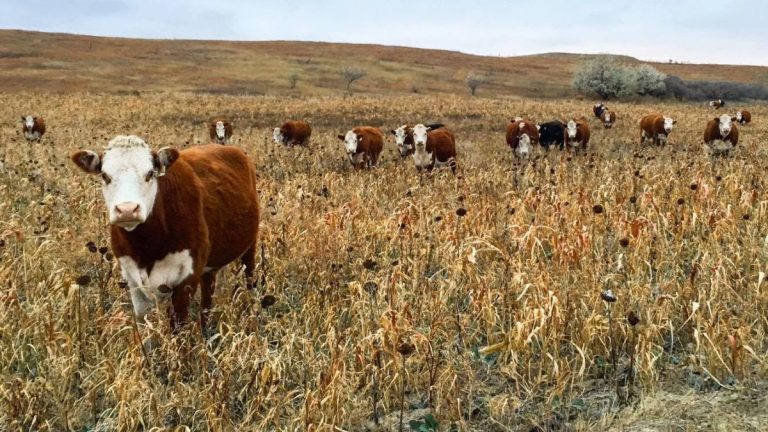
Prussic Acid Poisoning: How To Avoid It, And Other Concerns During Fall Grazing
Prussic acid is tricky to test for because it is volatile and if not sampled correctly, can test as safe from the lab when it is not safe. To test for prussic acid toxicity:
- Sample the youngest leaves from 20 plants across the field
- Gently fold leaves and place into a zip lock bag. (Take extra caution not to damage the leaves, if the leaves are damages it opens up the plant for the prussic acid to volatize before it gets to the lab, giving it a false safe result)
- Overnight your sample so it arrives at the lab Monday-Thursday (this ensures it can be sampled right away for the best results)
If the sample comes back marginal or unsafe, don’t worry you can still utilize the forage. Wait 7-10 days after a killing frost or swathing before it is safe to graze. This gives time for the prussic acid to volatize off.
Prussic acid binds to the hemoglobin in the bloodstream which hinders oxygen transfer therefore causing asphyxiation. Symptoms of prussic acid poisoning appear rapidly, within minutes of the livestock consuming forage. Immediate symptoms include staggering, labored breathing, spasms, and foaming at the mouth. Affected animals will often lie, and thrash quickly. If treatment isn’t administered quickly it will result in death.
Do not forget to also test nitrates in your forage. Drought make plants more apt to carry unsafe levels of nitrates. The problem occurs more in ruminants than other livestock animals, if the cattle or sheep are pregnant one of the first telling signs is abortion. Other signs of nitrate poisoning include labored breathing, muscle tremors, and a staggered gait, if not treated the animal can die quickly.
Overall, sorghum sudangrasses and other species provide high quality and quantity forage, especially in years of drought. With such a tough year, be sure to take a these few steps to ensure your continued success.
@north40ag Prussic Acid Poisoning #montana #forage #farmtok #weseedyou
♬ I Can Feel It v3 - Nick Sena and Danny Echevarria
